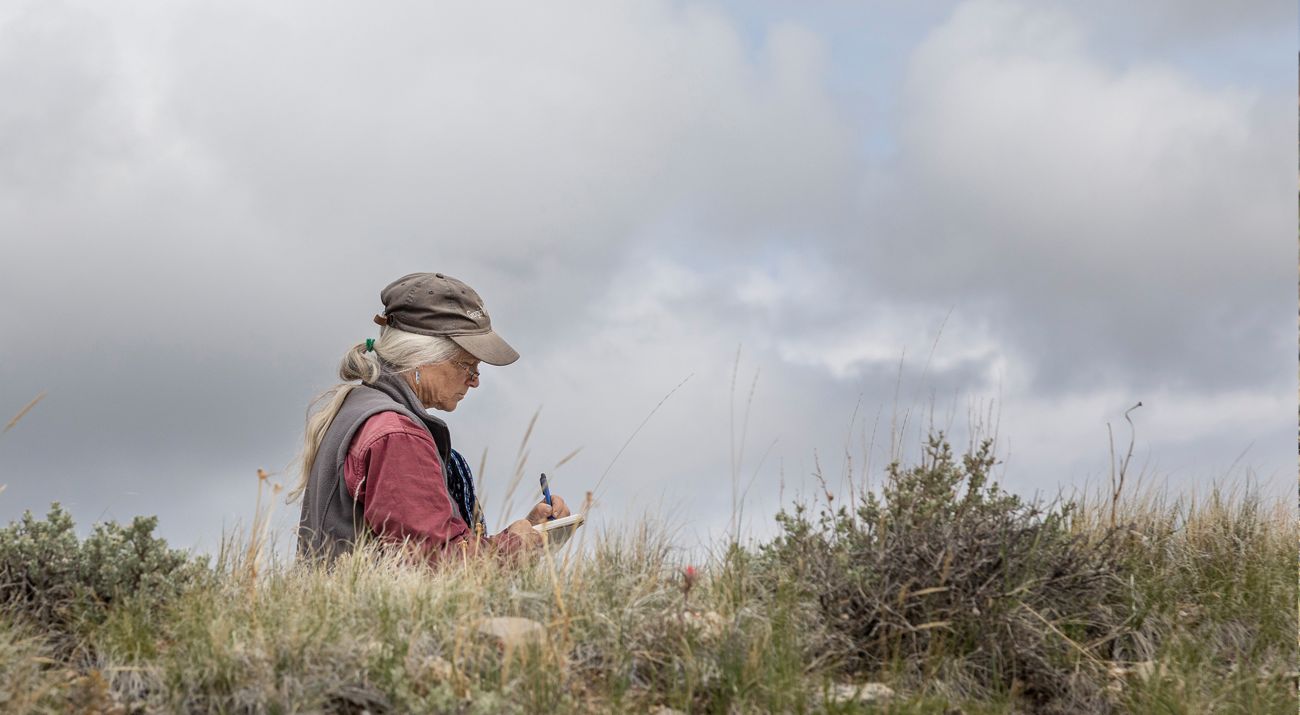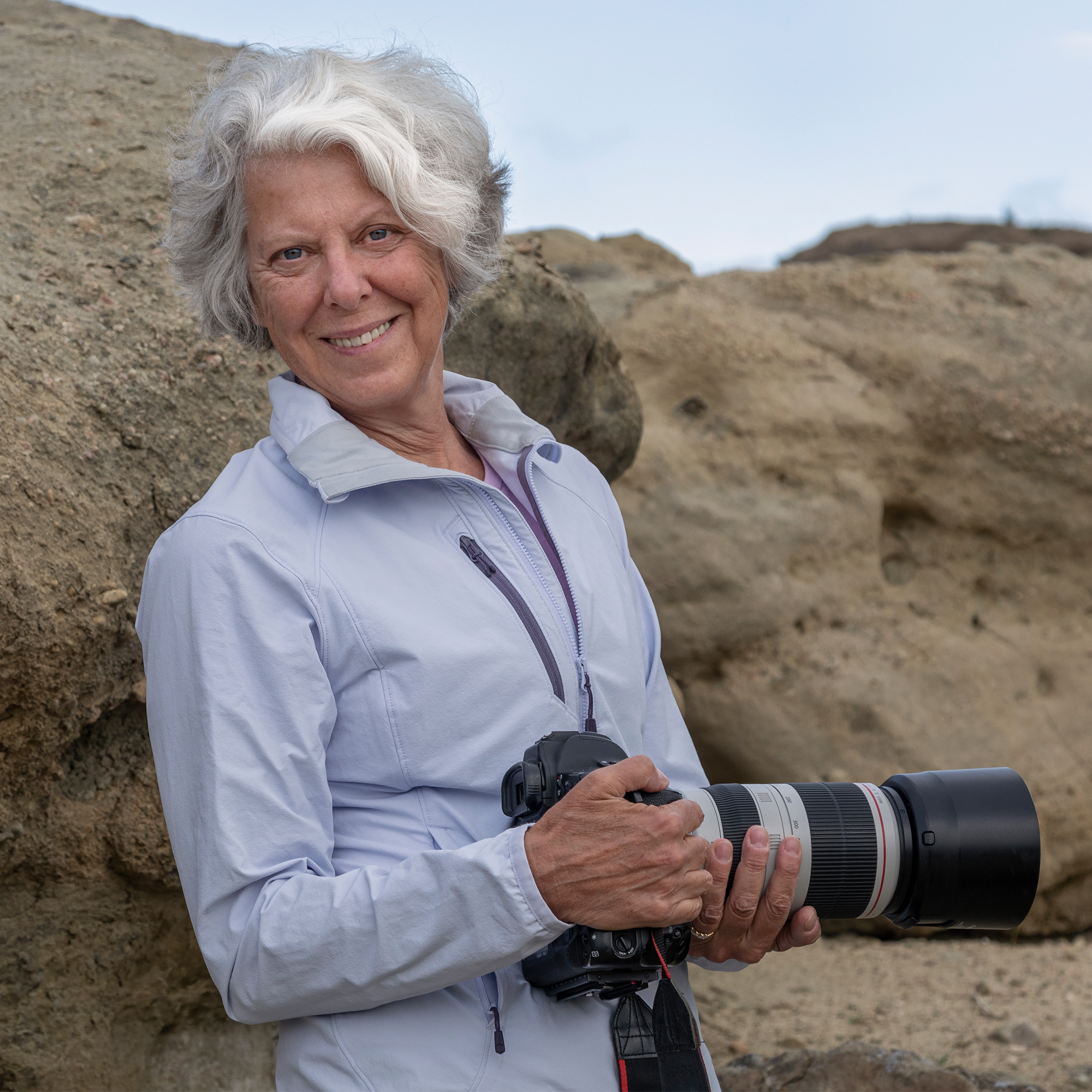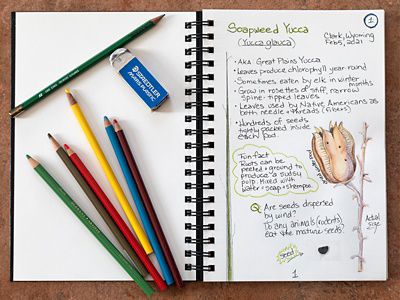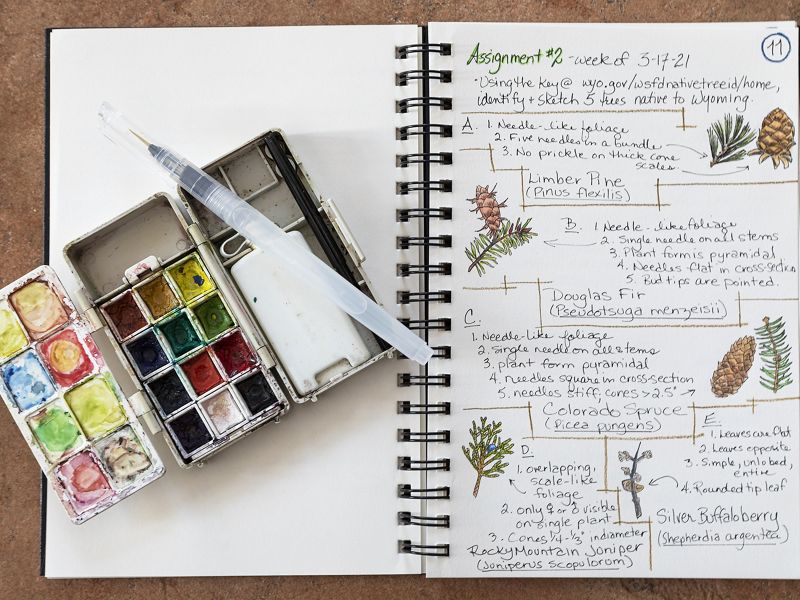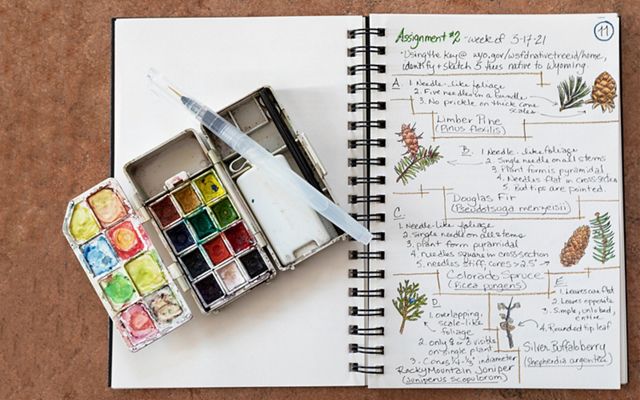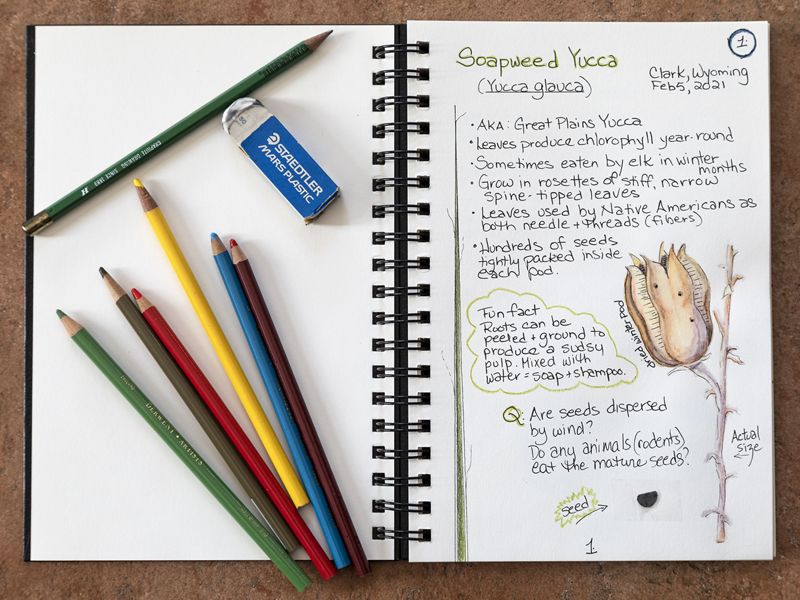Wyoming Arts in Nature Program
Get involved to see how local artists are connecting to nature at TNC conservation areas and research sites.
Quote: Georgia O'Keeffe
Nobody sees a flower really; it is so small. We haven't time, and to see takes time—like to have a friend takes time.
Engage with Us
Email us your response to the art and artists we feature at wyoming@tnc.org.
We know the power of art: To inspire. To uplift. To challenge. Our astonishing ability to create art is something that defines us and makes us human. And ever since the very first artist made his or her mark on this planet, nature—and human engagement with nature—was often the inspiration.
Now, as both nature and people face unprecedented challenges, we turn to art and to artists to play a role in helping us connect to Wyoming’s natural world in a vital way—through our emotions. We believe the human gift of artistic creativity can help us find new reasons, and new motivation, to save the lands and waters that sustain us.
TNC’s recently launched Arts in Nature Program uses our conservation areas and research sites to deepen local artists’ connections to nature, fosters the link between the concepts of art, nature, and science—and seeks to inspire you.
We invite you to join us on this artistic journey by learning about our programs below, hearing from participating artists and viewing and engaging with the creative works in our gallery.
Share the Inspiration: Post about your favorite Arts in Nature project or artists on our Facebook or tag us on Instagram @tnc_wyoming.
Q&A with Kathy Lichtendahl
Kathy Lichtendahl serves as Vice-Chair for TNC’s Wyoming Board of Trustees and helped spearhead the creation of TNC’s Arts in Nature program. She is an acclaimed photographer who owns the studio, “Light in the Valley, LLC,” and runs a popular podcast called “What I Do All Day.” A life-long conservationist, Kathy sees herself as a story-teller—using photography to connect people to nature in ways that inspire an environmental ethic. She visits TNC’s protected areas and preserves to seek new stories to share about Wyoming’s special plants and wildlife.
How and why did you first start photographing nature?
I’ve been a conservationist for many years, long before I started photographing nature. When we first moved to Wyoming, I was heavily into fiber arts. I was in the studio every day, working with fabric. Then my husband retired, and I realized that I didn’t want to be stuck inside all the time. I wanted to find a creative outlet that allowed me to be out in nature with my husband, hiking, camping and doing all the things we loved to do. Photography was a natural place to go—and I’ve been outside almost every day since!
What connections do you see between conservation and art?
People tend not to care about things that they think are not relevant to them, or things they don’t see as beautiful right off the bat. I think it’s critically important to find those elements in nature that need protection but are being ignored. This is why I really love photographing insects and small animals. I like to figure out a way to show the unexpected beauty of these species that are ignored because people aren’t aware of them. We have to introduce people to these species in order for them to care.
Why did you want to help launch TNC Wyoming’s new “Arts in Nature” program?
I think this Arts in Nature program is going to be valuable in making new connections for people. Not everybody gets to go to TNC preserves, and not everyone understands the value of these protected areas. By inviting artists onto the preserves and using their talents to highlight various aspects of these places, we can reach a much larger audience, and we can show people why conservation is so important.
What makes a photograph “successful” or “good” in your eyes?
The answer has changed dramatically for me over the years. Photography is such a unique blend of science and art, of technical skills and creativity. When you start out in photography, I think you try hard to master the science and technical aspects of it. So, at first, you just want to capture an image that’s crisp and has good contrast, and good composition. But what you’re often missing is the behavior of the animal, or even of a plant, and how this species interacts with the rest of us. Biodiversity is all encompassing. We are all related to and depend on each other. Being able to show those connections and capture those behaviors in my photographs is way more important to me now.
How do you choose what to photograph on a given day? What inspires you?
This has also evolved for me, and I give a lot of credit to my fellow photographer, Jaymi Heimbuch, who runs the Wild Idea Lab, for changing how I work. Instead of thinking: “today I want to go photograph a certain species,” now I start out by asking myself: “what story do I want to tell?, and “what do I want people to feel or think?,” and then I go out and find the place or species I need to tell that story.
What do you find is the biggest challenge for you as an artist who captures nature?
The biggest challenge for me is remembering to incorporate people into the story. I love to be out in the middle of nowhere, alone, focusing on a species or place. But I have to remind myself not to exclude people from the story telling. I challenge myself to show how my subjects impact people and why they should care.
Can you share a favorite story or memory from one of your visits to a Nature Conservancy preserve?
I’ve visited quite a few preserves over the years. One of my favorite memories is a couple of years ago, I took a women’s photography group out to the Tensleep Preserve. We stayed a few nights in October and we ended up getting snowed on. It was such a beautiful experience in an amazing place—and we fully experienced both summer and winter in the span of such a short time—it was magical.
Is there a particular example of your work, a photograph that comes to mind as having been especially successful at reaching people?
I think the one that immediately leaps to mind is a photo I took that captured the partnership between coyotes and badgers. I stumbled into this bit of knowledge—that coyotes and badgers actually work together to hunt, and I was able to capture this interaction with my camera. It just amazed me. People viewing the photos, I think, learn that story and feel that same amazement.
Current Programs
-
Select artists will explore the landscapes and wildlife of Heart Mountain Preserve in half-day workshops led by naturalist volunteers and share their interpretations of the flora and fauna.
-
TNC is proud to be a sponsor of this innovative Jackson Hole Public Art initiative to unite world-class art and ground-breaking science to inspire residents and visitors to Jackson. Focused on the matchless natural wonders of the Greater Yellowstone Ecosystem, this program will result in a series of urban murals inspired by a scientific topic provided by TNC. Select muralists will be asked to respond to this topic, and wheat-pasted murals will be installed throughout Jackson in June 2021 to educate and engage the public. Viewers will also be able to download an app to bring the murals to life via smartphone through augmented reality technology. Learn more.
-
It’s a meeting of the minds—for the good of Wyoming. At TNC we’ve got scientists thinking big to tackle the most pressing threats to our ecosystems and species. Now our researchers and project managers are uniting with local artists, who are thinking creatively to bring an exciting new dimension to our conservation work on the ground. In the coming months, select artists will interpret and create from their experiences with TNC staff at some of our most exciting project sites. We can’t wait to share their creations with you here! Our first Art & Science Team-Up projects are:
Wildflower Watch Phenology Project, Jackson Hole
